Yesssssssssssssssssssssssssss.
It’s time for fried noodles again.
You know me…. and fried noodles.
Right. You don’t.
Well, lemme tell ya. I love ’em. Can’t live without ’em.
Today, the noodles used are a little bit unorthodox if you may.
If you’ve seen and cooked with these babies before, well, high five! For those who haven’t, they’re called silver needle noodles or rat noodles simply because they look like a needle or a rat’s tail. Don’t get gross out. They’re not really rats. Maybe we shouldn’t have the Chinese name anything.
Made from rice flour, these noodles are white and slightly translucent. You can easily find these noodles sold fresh in most Thai or Chinese markets. They’re labeled as rice pin noodles.
Now that we’ve established that these are indeed rice noodles and not rat’s tails, let get on with it.
Guys, meet ‘lo shu fun’ (pronounced as low she fun). In Malaysia, they’re very popular and most Chinese restaurants or hawker stalls can have them freshly fried for you in no time. They’re commonly cooked and served in a claypot. I suppose the purpose is to keep the dish warm for a longer time.
This is one type of the many fried noodles that my dad used to make at home in the weekends. He’d cook wok after wok of it while I gorge plate after plate of it. We’d then end the meal with hot Chinese tea. It just simply gratifying.
Slightly springy yet soft noodles cooked with ground pork and fresh, crisp bean sprouts. Really quick and no fuss, this dish can be whipped up and on the table in less than 15 minutes.
Seriously.
The sauce may look simple but when everything comes together, it tastes amazing. You’ll be licking the bowl when you’re done with the noodles. I swear.
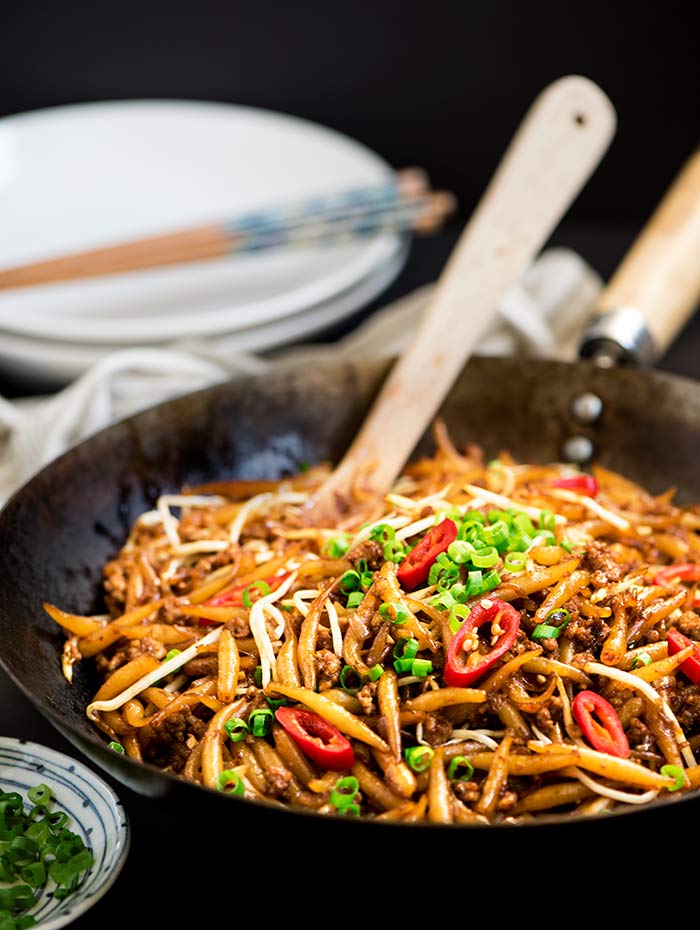
Tips:
1. A hot wok or pan is the key to delicious fried noodles.
2. Never fry more than 2 servings per wok or pan. If you’re cooking for more than 2 people, cook them in batches or the dish will not turn out as awesome.
3. The ground meat I usually use is 80/20. Pro is that they’re more tender. Con is they can be greasy. So what I do is I extract the liquid fat from the pork before frying the noodles. That way, I don’t add additional oil to it and the noodles will not turn out as greasy.
Fried noodles your kind of thing? You’re going to love this Hokkien Noodles (KL Style). Another Malaysian stir-fried noodles with pork, shrimp, squid & vegetables cooked with lard & pork-shrimp broth.
Also, if you haven’t already, check out my last post Curried Fried Calamari. Perfect crispy coating made from a special blend of curry flour mix enveloping delicious & tender squid inside.
- ½ lb ground pork
- Marinade for pork
- 1 tsp light soy sauce
- 1 tsp cornstarch (to help tenderize and give a glossy finish to the pork)
- Pinch of salt and pepper
- 1 (15oz) rice pin noodles
- 5 garlic cloves, finely minced
- 2-3 small shallots, finely sliced
- 1 green onion (white part), thinly sliced
- 1 large handful (about 4 - 5 oz) mung bean sprouts
- 1 tbs light soy sauce
- 1 tbs oyster sauce
- 2 tbs thick camarel sauce (for color)
- Pinch of salt & white pepper or to taste
- Pinch of sugar
- 1 green onion (green part), thinly sliced
- Marinate Pork: Add the ingredients from the 'marinade for pork' to the ground pork. Mix well and let pork sit for 10 minutes.
- Separate Noodles: In a large bowl, add warm water and place the rice pin noodles in it. This is to help the noodles separate easily. After 5-10 minutes, with the noodles still in the water, gently press the noodles to separate them.
- Browni Meat: Over medium high heat, add the pork to a wok and brown it. This is to extract fat from it so the noodles aren't overly greasy. Once browned, set aside and leave the fat in the wok. Mine usually has 1 tablespoon of liquid fat. Add more oil if your pork doesn't excrete that much oil.
- Fry Noodles: Over medium high heat, fry the shallots and green onions. Once it turns light brown, add the garlic. Once they turn brown and become fragrant, add the pork. Fry for 30 seconds and add the noodles.
- Add the soy sauce, oyster sauce, thick caramel sauce, salt, white pepper and sugar. Stir to combine well. Add the bean sprouts and stir again. Taste and adjust seasoning if needed. Once bean sprouts have wilted a little and are cooked, dish out and top noodles with green onion. Serve with sliced red chilies or sambal. Finish the meal with hot Chinese tea to flush your system.

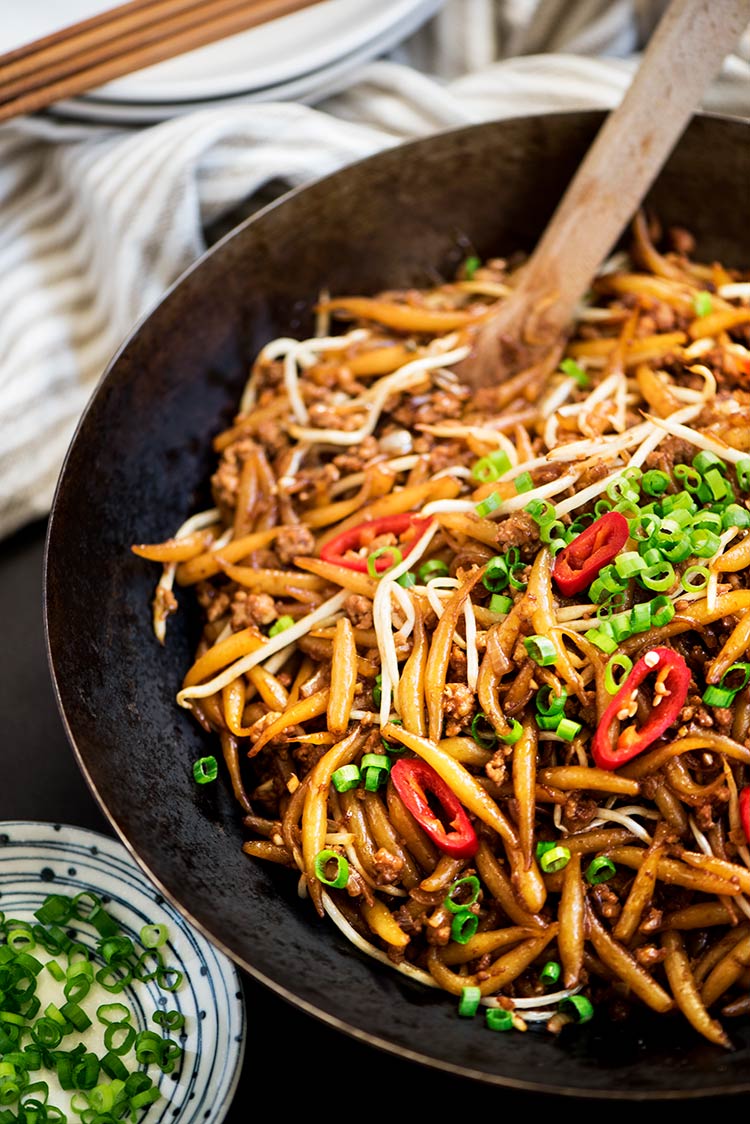
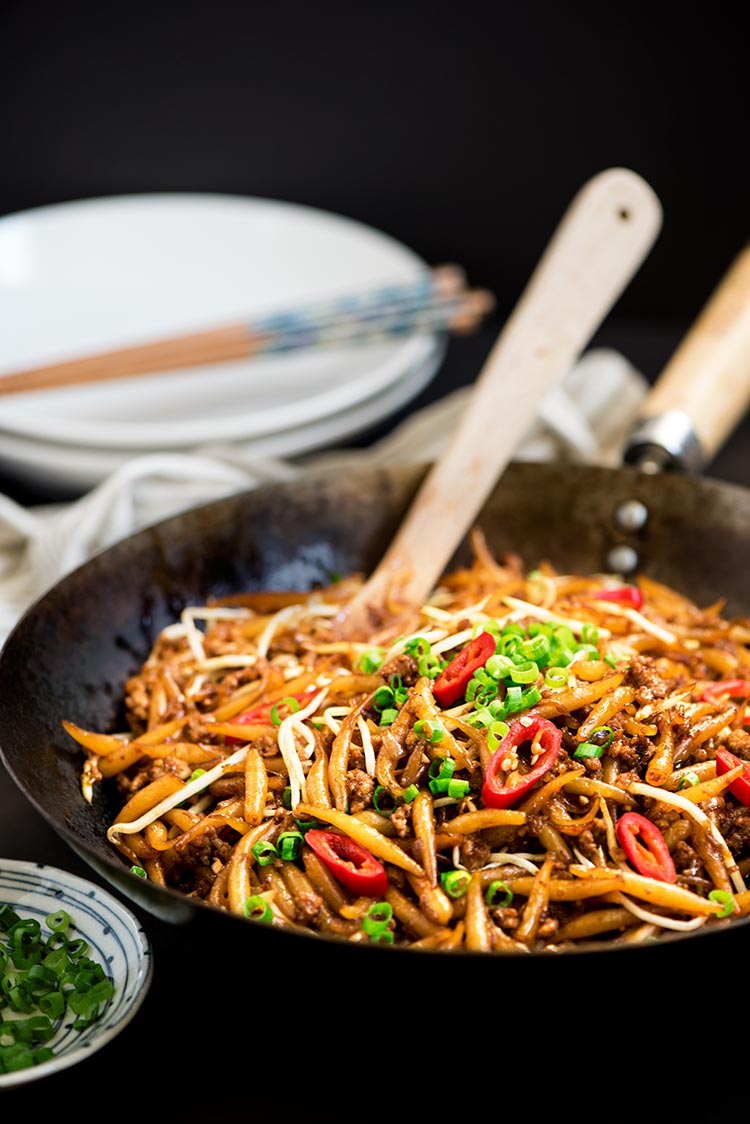
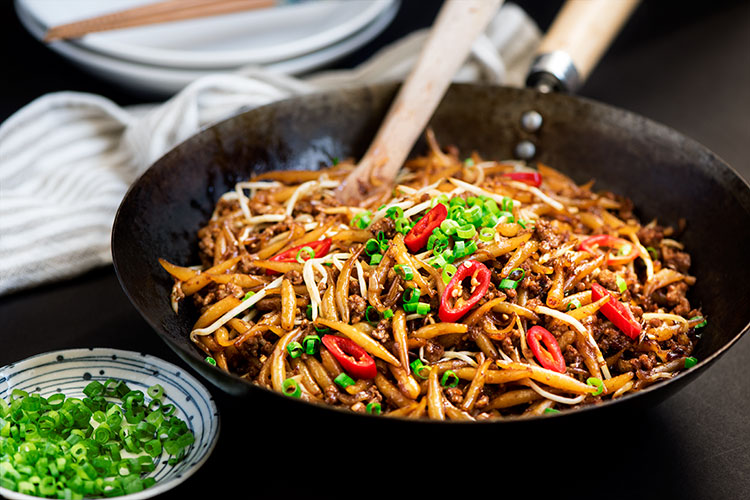
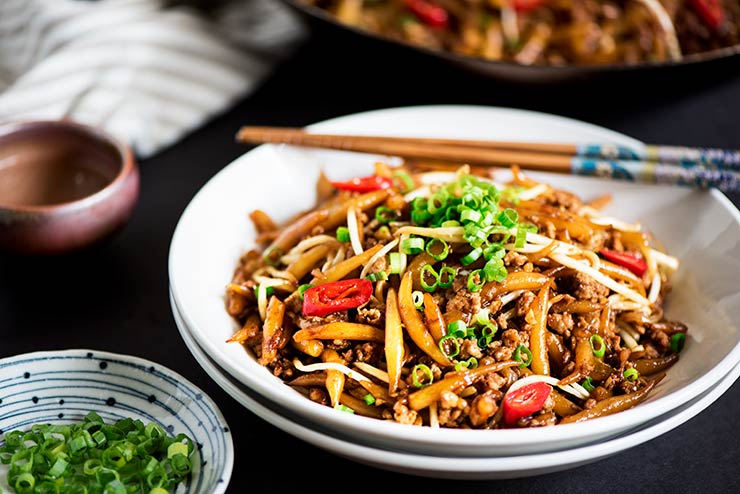
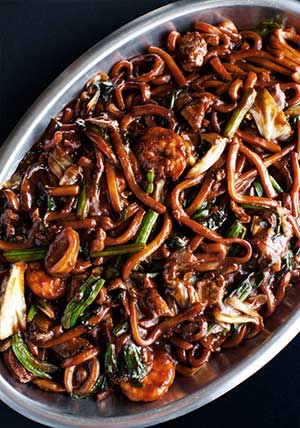
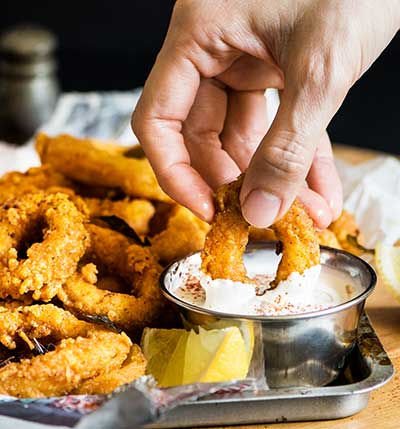
12 comments
Ai Ping,
You’re blog is killing me. All I want to do is stay home and cook from it! Everything looks delicious and the recipes seem “right” based on my cooking experience. Plus, I share both your love of fat and a husband who loves lean. (Half the time he removes the skin from fried chicken! -Don’t know if I could live with him if he did it everytime.) Thank goodness the kids share my superior taste! Now, if only I was also skinny like you… Haha!!
These noodles remind me of something similar from my hometown of Kunming, Yunnan, China. It’s close enough to Thailand and Vietnam that the food culture is related.
Thanks so much!
Denny
Hi Denny. You just made my day. Thanks for your kind words.
I loooove noodle dishes! This looks just like a takeout!
I can’t live without noodles… specially fried noodles. This could potentially be better and faster than takeout unless we’re in Malaysia. Then it’s going to be arguable. :p
This looks absolutely fantastic! I always love these noodles! Yours looks and sounds SO DELICIOUS! I definitely need to hunt down some silver needle noodles now. By the way, love your photographs!
Thank you! I went to your about page and found out you’re in LA! Really? Me too! You can defitely find these noodles in any Chinese market in Alhambra/Monterey Park.
You are in LA too? Hello fellow Angeleno!
It is good to know that I can get the noodles in the San Gabriel Valley. I go to that area about once a month for dim sum or Din Tai Fung. After that, we go to Chinese supermarket. I will make sure I get some next time.
Hahaha… Hi to you too. :p
Yes, San Gabriel Valley is heaven for all things Chinese. I do dim sum and Din Tai Fung too! :p And I only go there to chop for Chinese ingredients. The noodles can even be used for soup based noodles if you like em soupy. They’re a little lighter, less dense and slightly more bouncy than regular udon. Hope you enjoy them!
Ping your hokkien fried Lo She Fun noodles looks simply tempting, super delicious to taste I am sure. Great job! Ka yau!
Thanks mum. It was delicious. Simple enough to make when I go back to Malaysia…. although I’d still prefer if dad cooks it.
I love lo shi fun! will try to recreate this with your recipe. Looks smashing!
Thanks Josephine. Malaysian hawker stall or street food at its best. Well… along with all the other plentiful delicious street food that we have.